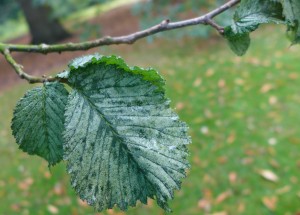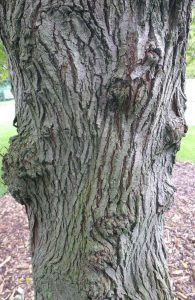Elm – Ulmus glabra (Ulmaceae)
Gaelic: ailm, leamhan
Common Names: Wych Elm, Scotch Elm
Elm is native across large parts of Europe and western Asia. In Britain many large specimens of Elm have been lost as a result of Dutch Elm disease, with few populations, including those in northern and western Scotland and Brighton, escaping the destruction it caused.
Mature trees can reach up to 40m in height and have a broad crown and short trunk. The leaves are easily recognisable; oval with a toothed edge, an extended tip and bristly hairs which give the leaves a rough texture. Elm is wind pollinated and the flowers can be bisexual or male and female occurring separately on the tree (monoecious), they open before the leaves and are red-brown in colour. The fruits appear in late summer and have a distinctive papery wing surrounding the seed.
The wood is very rot resistant and is able to survive long periods of time under water or in wet soil. This has lead to it being used in boat building, water pipes and coffins. It is also used in furniture making and there are examples of work by Tim Stead, a Borders Craftsman, at all four of RBGE’s gardens.
The elm is also known as the ‘Wych’ is derived from the Middle English Wiche, from the Saxon Wice, which means pliable or supple, most likely a reference to its use in weaving baskets.
Location



2 Comments
2 Pingbacks